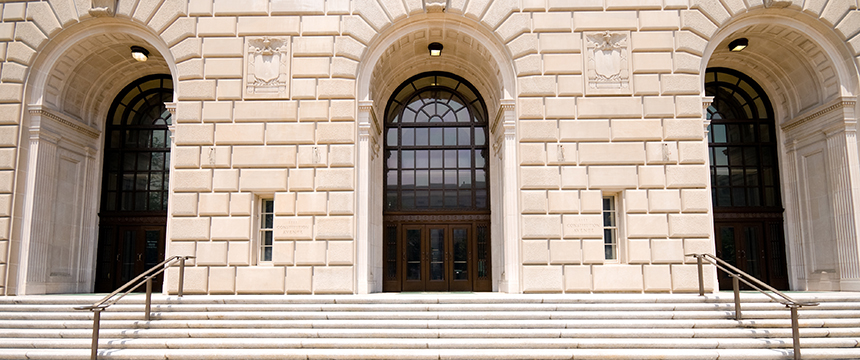
The Internal Revenue Service (“IRS”) and Department of the Treasury earlier this week released final regulations relating to direct cash payments for certain tax credits pursuant to Section 6417 of the Internal Revenue Code (the “Code” and, such rules, the “Final Direct Payment Rules”). The release of the Final Direct Payment Rules follows the issuance of proposed regulations in June 2023 (the “Proposed Direct Payment Rules”). The Final Direct Payment Rules largely adopt the Proposed Direct Payment Rules, with a few exceptions.
The following provides a brief background of Section 6417 of the Code, as well as a summary of the key points from the Final Direct Payment Rules, highlighting the changes from the Proposed Direct Payment Rules.
In addition to the Final Direct Payment Rules, the IRS has issued proposed regulations that would allow unincorporated organizations to be excluded from the application of partnership tax rules if such organizations include tax-exempt members (such as state and local governments and Indian Tribal governments) and are organized exclusively to produce electricity from certain property (the “761 Regulations”). These 761 Regulations would provide an opportunity for taxpayers eligible for direct cash payments to participate in certain joint ventures with taxpayers no eligible for direct cash payments. Taxpayers may rely on the proposed regulations until final regulations are promulgated, and parties interested in commenting before final regulations are issued may submit written comments to the IRS by May 10, 2024.
Background to Section 6417 Direct Pay Elections
Section 6417 of the Code, enacted as part of the Inflation Reduction Act (the “Act”) in August 2022, permits certain entities to claim a direct cash payment in lieu of certain tax credits. This opened the door to far more investment in renewable energy and energy transition projects from entities that would not otherwise have the opportunity to utilize credits associated with those projects (because of a lack of actual tax liability to utilize such credits). Certain specified entities, including tax-exempt entities, states and political subdivisions, the Tennessee Valley Authority, Alaska Native Corporations, and Indian tribal governments, may claim a direct cash payment for the production tax credit under Section 45 of the Code (“PTC”), credits under Section 45Y relating to technology neutral production tax credits beginning in 2025, the investment tax credit under Section 48 of the Code (“ITC”), credits under Section 48E relating to technology neutral investment tax credits beginning in 2025, and several other credits. In addition to the entities described above, taxable entities may elect to receive cash payments in lieu of tax credits with respect to Section 45Q carbon capture and sequestration credits, Section 45V hydrogen production tax credits, and Section 45X advanced manufacturing production tax credits, subject to certain limitations. The direct pay election must be made no later than the due date for the tax return of the year in which the election is made.
Final Direct Payment Rules
The Final Direct Payment Rules provide guidance on a number of issues relating to the direct payment for eligible tax credits. Among the highlights:
- The Final Direct Payment Rules provide detail regarding various defined terms used in Section 6417, including “applicable entity.”
- “Applicable entities” (i.e., those entities eligible to claim direct pay for all of the applicable credits under Section 6417) include:
- Non-profit organizations with federal tax-exempt status.
- The Final Direct Payment Rules clarify that it is insufficient for an entity to be classified as a non-profit solely under state law.
- Any State, the District of Columbia, or political subdivision thereof.
- An Indian tribal government or subdivision thereof.
- Any Alaska Native Corporation.
- The Tennessee Valley Authority.
- Any corporation operating on a cooperative basis that is engaged in furnishing electric energy to persons in rural areas.
- The Final Direct Payment Rules clarify that an entity that installs energy equipment does not “furnish electricity” for purposes of qualifying as an eligible entity under Section 6417.
- Instrumentalities and agencies of states (collectively, “Applicable Entities”)
- Taxable entities may elect to be treated as Applicable Entities with respect to Section 45Q carbon capture and sequestration credits, Section 45V hydrogen production tax credits, and Section 45X advanced manufacturing production tax credits.
- The Final Direct Payment Rulesprovide guidance regarding electing taxpayers, how to make the direct pay election, the determination of the applicable credit amount, and the impact on credit amounts for grants and other funding awards that are not taxable.
- Partnerships and S corporations are not considered Applicable Entities permitted to claim cash payments for ITCs, PTCs, or other eligible credits, even if all partners or shareholders, as applicable, are otherwise Applicable Entities. See the discussion below relating to the 761 Regulations and the option to elect out of partnership treatment in certain situations.
- If an election is made pursuant to Treasury Regulations Section 1.48-4 to pass through ITCs to a lessee of property, the lessee may not elect to receive a cash payment with respect to such ITCs. In addition, no direct payment election may be made under for credits purchased pursuant to Section 6418. These outcomes were predictable, but will be disappointing for many who lobbied for cash payments in inverted lease and tax credit sale transactions.
- A direct pay election must be made on the entity’s original annual tax return.
- The Final Direct Payment Rules clarify that while an Applicable Entity cannot initially make or revoke a direct pay election on an amended return, certain errors relating to such election may be corrected on an amended return.
- The Final Direct Payment Rules also allow Applicable Entities that would not otherwise file an annual tax return to choose to file its return based upon a calendar or fiscal year, provided any such entity maintains adequate books and records to support such choice.
- If an Applicable Entity uses any grants, forgivable loans, or other amounts that are exempt from income tax to acquire or construct investment-related credit property (generally, ITC-eligible property and certain other types of property for which the credit amount is based on purchase price or cost to construct), such amounts generally do not reduce basis for purposes of computing the available cash payment amount. However, if (1) such amounts are for the specific purpose of purchasing, constructing, reconstructing, erecting, or otherwise acquiring an investment-related credit property (the “Specific Purpose Test”), and (2) such amounts plus the applicable credit otherwise determined with respect to the investment credit property exceeds the cost of the property, then the amount of the cash payment is subject to reduction.
- The Final Direct Payment Rules clarify when the Specific Purpose Test must be conducted, and how the rule is applied. For example, for tax-exempt grants, the Specific Purpose Test is conducted at the time the grant is awarded. If the grant is awarded after the property is purchased, constructed, reconstructed, erected or otherwise acquired, the amount of the cash payment is not subject to potential reduction unless the approval of the grant was perfunctory and the amount was virtually assured at the time of application. For loans, the Specific Purpose Test is conducted at the time the loan is approved.
Additional Guidance Regarding Co-Ownership — 761 Regulations
As noted above, the Final Direct Payment Rules do not permit an entity taxed as a partnership to make a direct pay election, even if all of the partners are entities that would individually be eligible for direct pay. However, the IRS issued the 761 Regulations to allow certain unincorporated organizations that are organized exclusively to produce electricity from certain property to elect to be excluded from the application of the partnership tax rules, potentially enabling more Applicable Entities to obtain cash payments.
To be excluded from the partnership tax rules under the 761 Regulations, an unincorporated organization must meet the following requirements:
- The members of the organization must be able to be adequately compute their income without the necessity of computing partnership taxable income;
- The organization is availed of for the joint production, extraction, or use of property, but not for the purpose of selling services or property produced or extracted; and
- The following four requirements must be satisfied:
- The entity must be owned, in part or in full, by one or more Applicable Entities,
- The members must enter into a joint operating agreement with respect to the applicable credit property in which the members reserve the right separately to take in kind or dispose of their pro rata shares of the electricity produced or any associated tax credits,
- The entity must, pursuant to a joint operating agreement, be organized exclusively to jointly produce electricity from its applicable credit property, and
- The Applicable Entity that is a member of such unincorporated organization must make a direct pay election under Section 6417(a).
The election out of application of partnership rules applies only to certain types of direct payment tax credits — PTCs, nuclear power production credits under Section 45U of the Code, technology neutral PTCs under Section 45Y, ITCs, and technology neutral ITCs under Section 48E of the Code.
Although the rules are nuanced in their application and careful structuring is needed to ensure compliance, the 761 Regulations provide a potential path for Applicable Entities to co-own, through unincorporated organizations (such as limited liability companies), certain eligible credit property and claim direct payments, effectively avoiding application of the direct pay limitations for partnerships.
Foley will continue to monitor developments in connection with these rules. Please reach out to one of the attorneys listed here with any questions.

